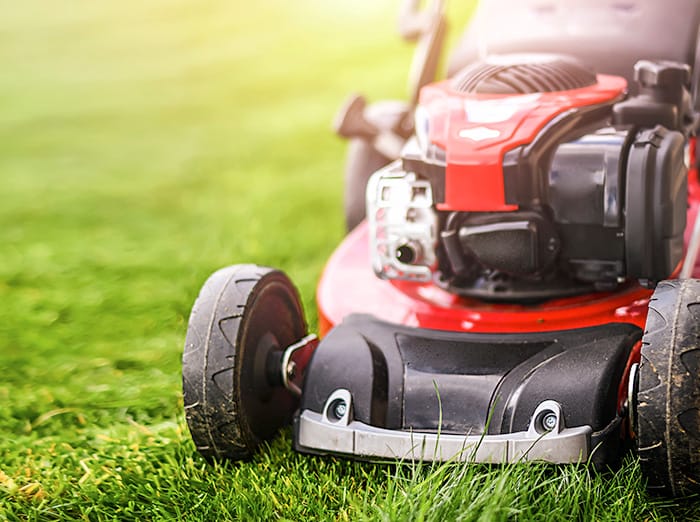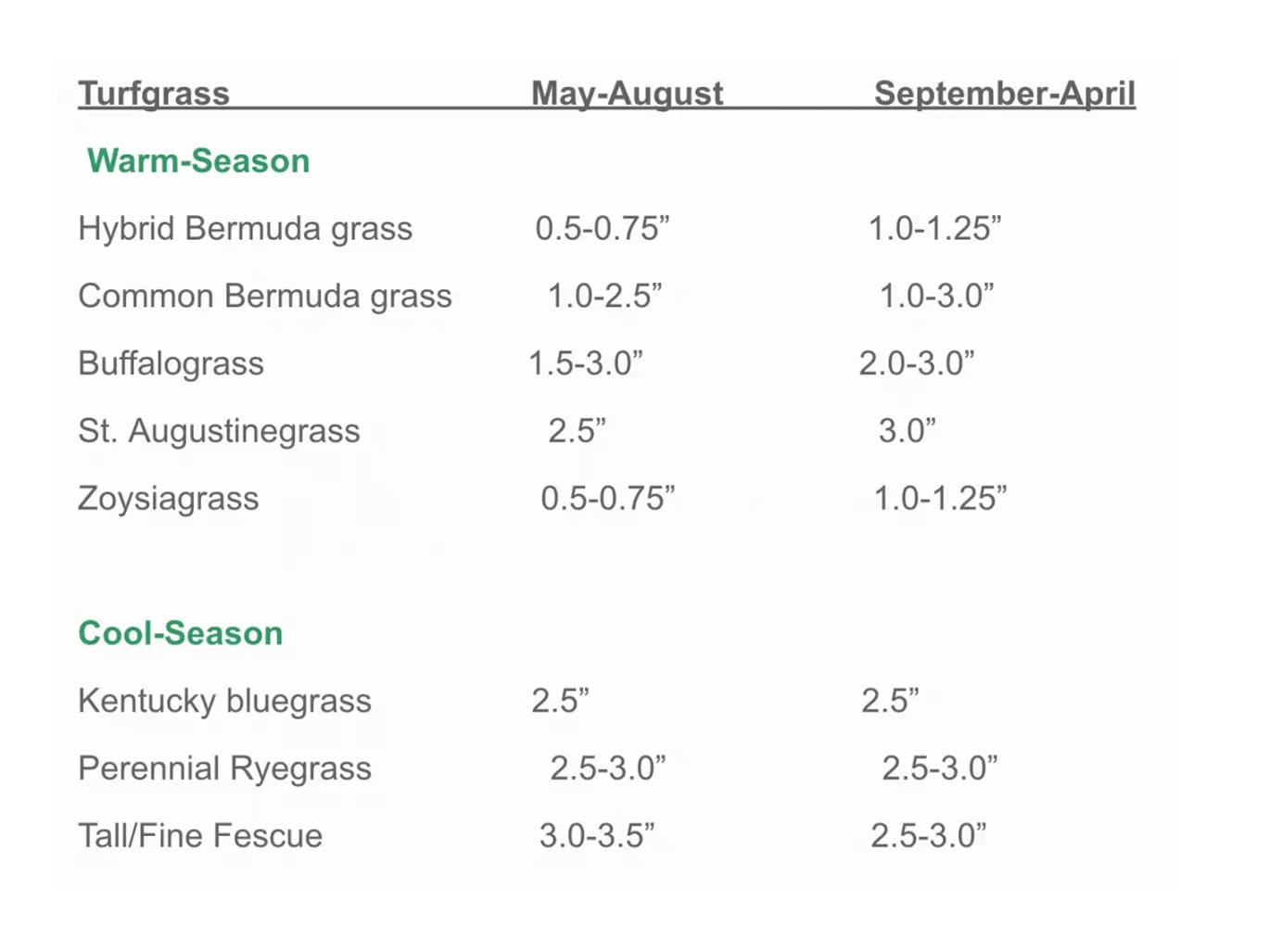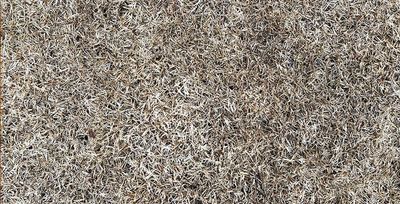There is not a universal mowing height for all grasses. Each different grass has a recommended height. The rule of thumb is to never cut off more than one-third of the total leaf surface in one mowing.

How often, how high, how short?
Generally, mowing once a week should keep you within the rule of thumb. However, during peak growing seasons mowing every four to five days may be necessary.
- Better to cut too high than too short.
- If cut too short routinely, your grass will begin to thin out and die.
- If your lawn has a mixture of different grasses (most do), then average the over-all recommended heights.
- Gradually raising mowing height during peak heat season will help to insulate and shade the soil, decreasing moisture loss.
CAUTION: If you hire a lawn mowing service, make sure they follow these guidelines. They may not take the time to adjust mowing heights from lawn to lawn throughout their busy day.
Typically we see lawns being cut too short, here are some recommended heights:

Start with the above heights, then observe and adjust to how your lawn is doing according to its specific needs. Ask one of our state-certified professionals if you need help determining which height is best for your lawn.
Take Note: If the lawn becomes weak due to insects, disease, injury, or high traffic, increase the mowing height by 1/2 inch for shady areas.
Mulch or bag?
Recycling isn’t just good, it’s easier.
Leave the clippings. Nutrients from clippings fertilize the lawn. Lawns that do not have clippings returned to the soil require 25-40% more fertilizer.
It is a common belief that mulching the clippings will cause thatch build-up, but this is not true. In fact, the clippings decompose within six weeks. As long as you follow our mowing height rule, thatch will not be an issue.
Today’s mulching mowers do an excellent job of returning the clippings to the soil. Mulching mower blades are designed to cut grass clippings extra fine, making mulching a lot easier.
Don’t like the look of dead grass on top of the lawn?
TIP: Use a blower to push the surface clippings back into the soil or raise the previous mowing height and re-mow the surface clippings only.
Never a dull moment!
Always keep mower blades sharp. How often you should sharpen your blades depends on the use. Check the tips of the grass after you mow. If they are frayed, then it’s time to sharpen your mower blades. Frayed tips mean the grass plants have been injured.
A big increase in the possibility of insect or disease problems can come from frayed grass blades. After one day of mowing with dull mower blades, the frayed tips will generally make the grass appear less green.
On today’s lawn mowers, changing the blades are faster and easier than ever before. Keeping an extra set of sharp blades around will help to keep you on schedule and make your lawn happy!
Change up your mowing direction
Why mow in different directions? When you mow in different directions, this will help the grass to grow correctly. Mowing in the same direction every time can cause slanting of the blades in the lawn. Tires or wheels from your lawn mower can cause compaction tracts that become unsightly. Altering directions ensures a more even cut, grass blades will grow more upright, and your grass is less likely to develop into a set growing pattern.
Try changing your mowing pattern to diagonal, horizontal or vertical to give a healthy look to your lawn. Mow your lawn in a different direction or pattern with each mowing or every other mowing, especially in lawns of shorter grass types.

Testimonials



News, Blogs & Articles
Our Blog













